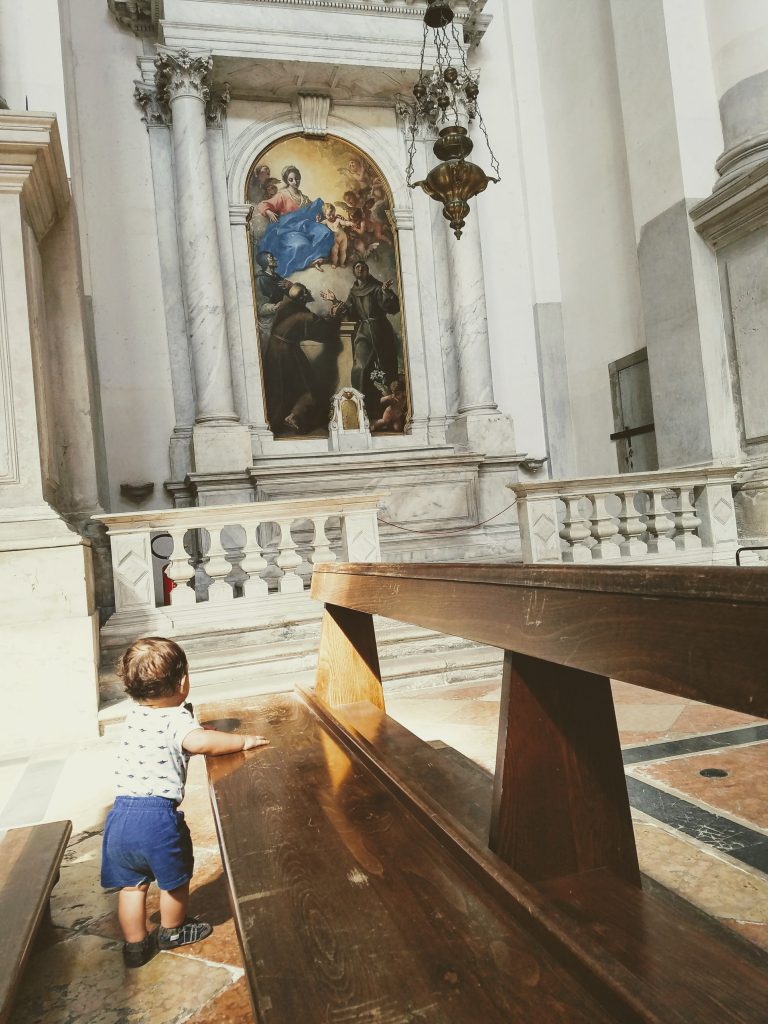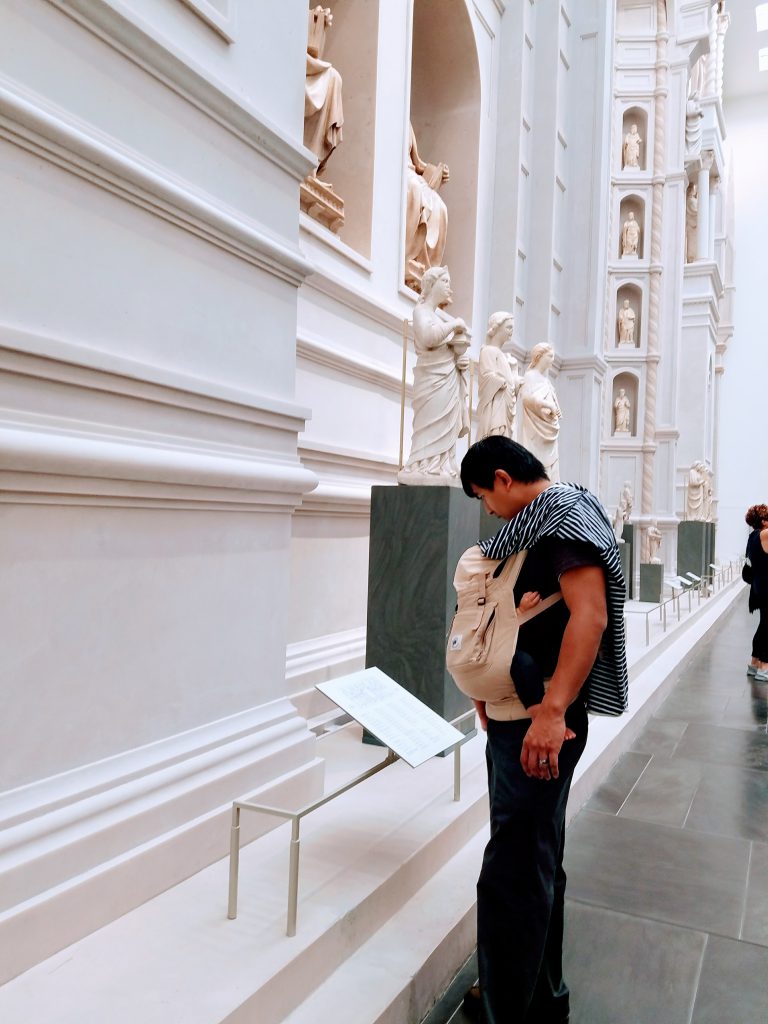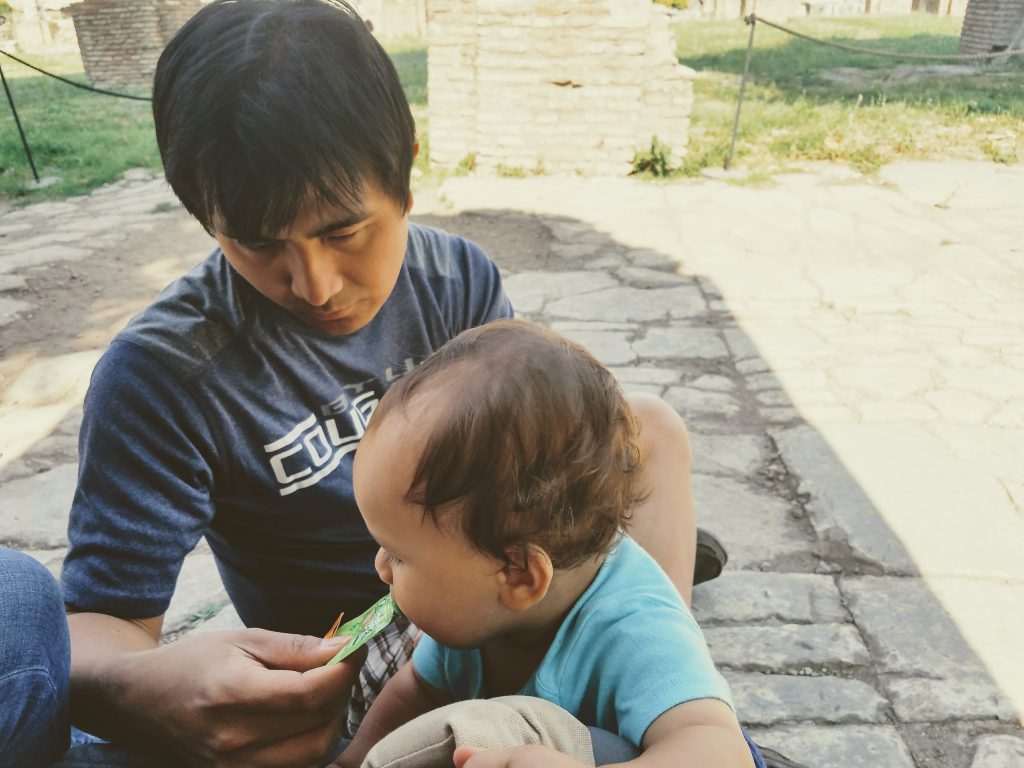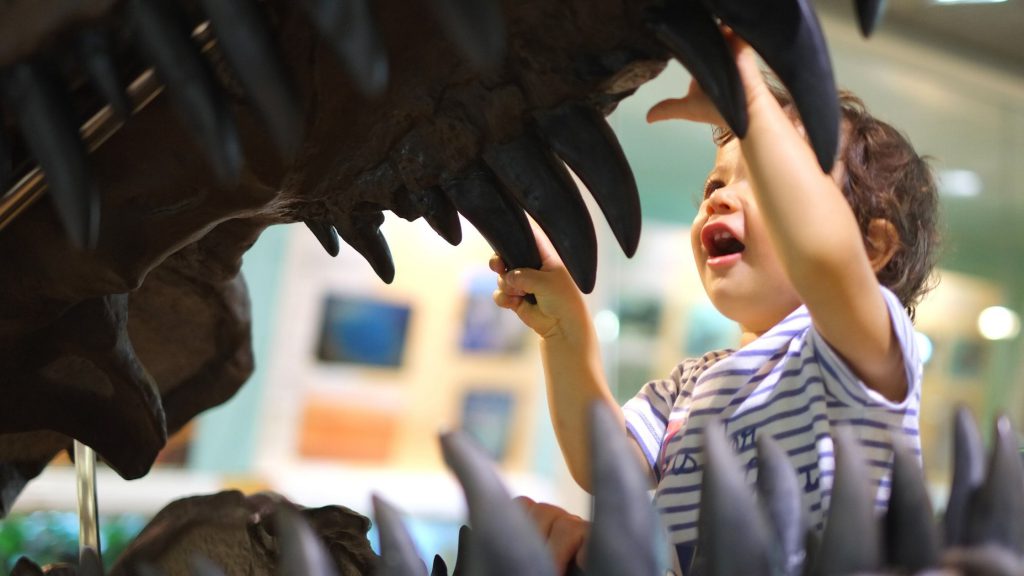This page may contain affiliate links, which means that we may earn from qualifying purchases at no additional cost to you.
Visiting a museum with a baby isn’t always the easiest of feats.
We learned this the hard way on a museum-intensive trip to Italy with our almost-one-year-old. He was too young to enjoy the exhibits (which were a lot of art and history museums), but old enough that he was busy and active.
But we were in Italy! Birthplace of the Renaissance! It would be a crime to not see what the world-renowned museums had to offer. So….we powered through. Some experiences were more successful than others, but for the most part our son did pretty well.
And we were able to enjoy Michelangelo’s David, Botticelli’s The Birth of Venus, Raphael’s The School of Athens, the Uffizi Gallery, the Sistine Chapel, the Vatican Museums, the Doge’s Palace, and countless others. And we wouldn’t have traded that experience for anything.
At this point we’ve been to a lot of museums with our kids, and along the way we’ve picked up a few strategies that have been helpful to us. All babies are different, but hopefully you will find some helpful ideas if you are going to brave a trip to the museum with your baby!
Tips for a smooth(er) museum trip with a baby:
A note about age: “Baby” is a really broad category. In my experience, the older your baby gets (and the more mobile), the more…resourceful you have to become. Younger babies tend to do great at museums because they often nap for most of the time and are more content just hanging out in a baby carrier or stroller. Most of my tips here will be for older babies because usually that’s where the trouble lies…


1. Manage expectations
Going to a museum with a baby is not going to be the same as going to a museum pre-baby. The sooner you accept that the sooner you’re on your way to a pleasant, albeit different, museum experience.
Just go into it knowing that there will be times you don’t get to see everything you want to see or do everything you want to do. I’ve learned that if you lower your expectations you’re less likely to be frustrated if things don’t go quite according to plan.
2. Use a stroller or baby carrier
We’ve used both a stroller and baby carrier at museums, and each has pros and cons. It kind of just depends on your style, the age of your baby, and your baby’s preference.
For our two weeks in Italy, I exclusively used our Ergobaby carrier. Baby carriers are great because you can nurse while you’re browsing and then transition easily to a nap. If you’ve never tried nursing with your baby in a baby carrier, check out my post on it here. Carriers can also be easier if you’re in a crowded museum or have to navigate stairs or rough terrain.


That being said, strollers can also be a great option, one that we’ve often employed for museums. Sometimes it’s nice to be able to just set your baby down and not have to carry them around, even if you’re using a comfortable baby carrier. And as long as you keep moving, babies can often last for quite a while in a stroller before they start getting fussy. If I’m bringing a stroller I’ll usually just throw the carrier in the bottom so that when the baby wants to come out I have that option as well.
Really it comes down to preference, yours and your baby’s. Just make sure you bring something to transport the baby around or you’ll probably be exhausted by the time your visit is over.
3. Let your mobile baby explore
When your baby starts getting more mobile, you won’t be able to count on them being content in the carrier or stroller for as long. At some point (especially if you’re visiting multiple museums in one day like we often do when we travel), you’re going to have to set them free.


You can alternate between carrying them and setting them down for brief periods to explore. If you can find a bench or some chairs you can let them hold onto that while they toddle back and forth for a few minutes (see picture above). Depending on how sturdy your baby is, you can also hold onto their hands and help them to walk.
And I have to admit, we have let our son crawl around on many museum floors. We use hand sanitizing wipes to frequently wipe down our son’s hands if we resort to this strategy.
4. Plan naps strategically


When possible, I try to plan it so that our baby will nap while we are at the museum. This helps maximize our time at the museum and provides some uninterrupted time for us to really be able to enjoy our time there. Sometimes that means pushing a nap back a little bit or adjusting what time we plan on being at the museum. I typically use a baby carrier, but have also successfully used a stroller for naps as well.
5. Bring something for your baby to chew on
A pacifier or teether can be soooo helpful when you’re trying to keep a baby distracted and somewhat quiet. Giving them something to put in their mouth is a great strategy for keeping them entertained and reducing meltdowns.


And when you’re traveling, BRING A PACIFIER CLIP! They are incredibly helpful. I can’t tell you how many pacifiers we lost before we learned this simple trick. And losing your baby’s pacifier on a trip is not a pleasant experience.
And they are useful for more than just keeping track of pacifiers. My second son never took a pacifier and I still used pacifier clips all the time. I love them for attaching teethers, balls, toys, snack cups, etc to the car seat/stroller or carrier so that they don’t get lost. Or thrown. Anything with something for the clip to attach to is fair game. We use this kind from Amazon and they hold up great. Our favorite teethers are our miniature Sophie and this teether toothbrush. They have served us well on countless trips.
6. When possible, share the load
If you have someone else that you can trade off baby duty with it can make the experience a lot easier. When one person starts to get burnt out, pass the baby off to the other person to entertain for a bit. This provides a break for the adults, but also mixes things up for the baby as well and can help them to last longer without meltdowns.
7. Plan your museum trip in advance
Research what’s at the museum and go in with a plan of attack. If there are a couple of things that you really want to make sure you see, it’s usually best to visit those first while everyone is fresh. Sometimes by the end, the baby is getting bored and grumpy (and maybe mom and dad are too…). And if you’ve already seen the exhibits or artifacts that are most important to you, it won’t be too disappointing if you end up needing to cut your visit short.
8. Use food to your advantage


Typically museums aren’t going to want you to eat food while you’re inside. But that doesn’t mean that you can’t still use food strategically. First of all, set yourself up for success by making sure your baby isn’t hungry. A hungry baby is a grumpy baby and grumpy babies aren’t big fans of museums…
If you’re nursing, that means you have one kind of food that is definitely allowed (and typically bottle feeding is also permitted). If your baby starts getting fussy and your other strategies aren’t working, it might be time to step outside of the exhibit for a snack break. Oftentimes after a little food and a chance to move around, both you and the baby will be ready for another round of exploring.
9. Be flexible
Last of all, be flexible! So maybe you don’t get to see everything. Maybe you have to take several breaks. Maybe one person plays with a baby for a bit while the other enjoys the exhibits and then you switch. There is still a lot you can get out of a museum with a baby along. And when it comes down to it, it will still be a memorable family experience.
If you’re committed to trying to enjoy museums when you travel with your baby, it is totally possible!
What strategies have you found to be useful when you visit museums with your baby?







